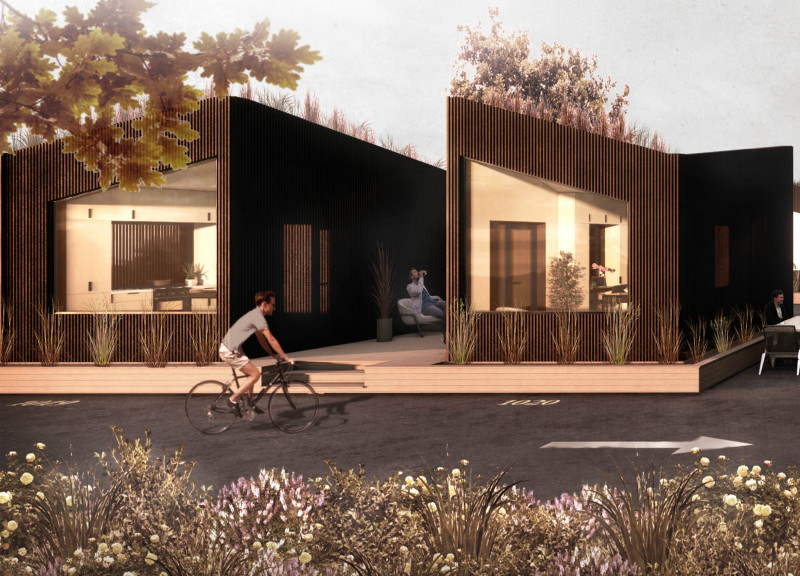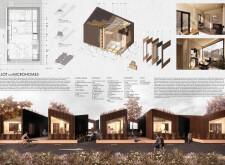5 key facts about this project
The project focuses on changing underused parking lots into microhome communities, providing solutions to complex housing needs and sustainability issues. Located in urban areas where parking spaces often remain empty, it takes advantage of existing infrastructure. The design concept highlights modularity and flexibility, allowing microhomes to make efficient use of limited space while fostering a strong sense of community.
Modular Design Concept
Each microhome is designed to occupy the combined space of two standard parking stalls. This approach maximizes land use and encourages interaction among residents. The introduction of green spaces, such as bioswales, not only enhances the environment but also helps manage water runoff, supporting biodiversity in the city.
Structural Framework
The microhomes sit on diamond piers, elevating them and reducing impact on the ground below. This foundation supports a system of primary wooden beams and secondary joists, creating a solid structure that ensures stability over time. High-density insulation boards in the floor assembly contribute to overall energy efficiency, and the choice of finished flooring offers both function and style.
Wall Assembly and Interior Features
The walls feature finished wood panels, which enhance the interior atmosphere. A vapor barrier is used to regulate indoor moisture. The construction method employs prefabricated wall modules, enabling faster assembly on-site. Each microhome includes flexible amenities, such as mechanical units and retractable partition walls, allowing for various living arrangements. Moveable furniture, including Murphy beds, maximizes space, making these homes adaptable to different needs.
Sustainable Roofing Solutions
The design incorporates a butterfly roof that facilitates the installation of solar panels and rainwater collection systems. This feature increases natural light and airflow within each unit, contributing to a healthier living environment. Surrounding each home, edible plantings offer fresh produce while adding to the community’s greenery, blending utility with aesthetic appeal.



















































